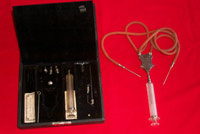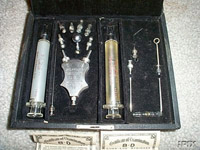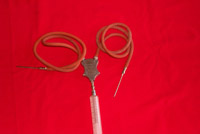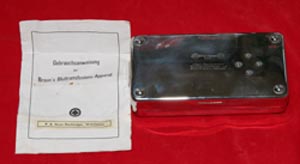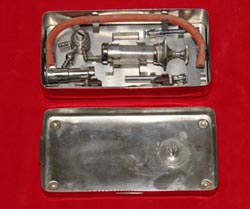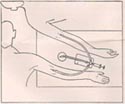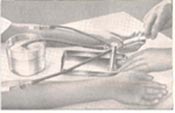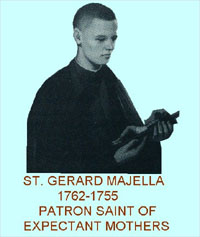|
See Anesthesia and Bloodletting in
Obstetrics on next page
|
|
Civil War
Era Birthing Bed
|
Birthing
Bed and Speculum
Table
Circa 1860s
The
necessity for a pelvic
evaluation led to the development of the examination table. The
first
furniture for this purpose was called "Speculum Table"
(1839),
where speculum vaginal examinations were performed. A simple and
cheap portable table for delivery and operations. It is equipped with a
sliding stirrups and a sliding platform to catch secretions. This
delivery
table was believed to be owned by doctor in Alabama during the Civil
War
era. A similar table is illustrated on James V. Ricci, MD, 1949
book:
The Development of Gynaecological Surgery and Instruments, pg 496. Chap
X. |
Surgical
Knife
Circa 1860
The
first Cesarean
operations were done to extract a dead fetus from a dead mother.
Numa Pompilius (715 - 672 BCE), a legendary king of Rome forbids
burying
a dead woman until her baby was taken out of her. Early
Christians
believed that: "He who
does not bury the baby causes the promise of
life to perish with the mother!" No one survived the
operation
in Paris between 1787 to 1876 when the procedure was done on 24 living
patients. The surgical knife shown is unplated steel with ivory
handle
used around 1860.
|
|
Cesarean
Section
The
operation's name
probably goes back to the eight Century BCE. Numa Pompilius (715
- 672 BCE), a king of Rome forbids the burial of a pregnant woman
before
the young has been excised. The law continued under the Caesars
when
it acquired the name Lex Caesare. Some scholars believed
that
the name was derived from the Latin word Caedere, meaning to
cut. In 1867, there were 54% maternal deaths out of 1,605
operations
done in the United States.
The photo
is a scalpel
made of unplated steel with smooth ebony handle used circa 1860.
|
The
First Stethoscope
c 1816
Since the time of
Hippocrates, 5th Century
BCE, doctors usually placed their ears on a patient's chest to listen
to
the heartbeat and lung sounds. Faced with breasty woman, Dr Rene
Laennec modestly insisted on using a rooled-up sheets of paper as shown
on picture. Thus, in 1816, the first stethoscope was
conceived.
|
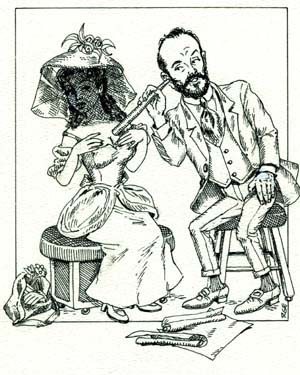 |

|
A replica
of the wooden
monaural stethoscope made by Rene
Laennec in 1819. A solid
wood
cylinder with a drilled
center. It could
be shortened
by pulling the other half of the stethoscope for closer listening. |

|
The
larger opening
in the chest end is for listening to the lungs. To listen to the
heart , the plug is inserted.
|
 |
Three separate
pieces that fit
together to form a 33 cm long, 3 cm diameter instrument was made by
Sharp
& Dome Co. circa 1955. |
Early
Blood Transfusion
in Midwifery
The first blood transfusion
was
done from animals
like sheep or calf to man. James Blundell (1790-1878) have done
the
first sucsessful human to human blood transfusion. It was done on
patients who would have exanguinated from post-partum bleeding.
In
1849, nineteen cases were successfully transfused; however, five
ended in death. This was a remarkable accomplishment considering
that blood grouping was unknown until 1900, and blood banking until 1936 |
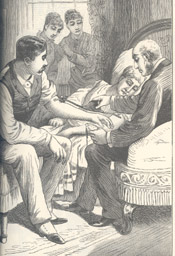
|
To overcome the clotting
problem, blood transfusion
was done directly from donor to patient. Circa 1850s.
Below:
A cased blood transfusion
set with
tubings,
syringes, and needles dated 1913.
|
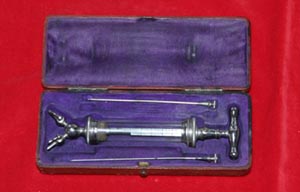
|
19th
Century Blood Transfusion Set
A rare antique blood transfusion
syringe from the 19th Century. The syringe is placed in the
original silk lined leather box.
|
German Antique Blood Transfusion Set
Complete with illustrations and
instructions. |
| Ergot of rye was
introduced by John
Stearns (1770-1848) in 1807 for postpartum hemorrhage and for
prevention
of anticipated bleeding. It was of little help on patients who
already
have lost significant blood volume. |
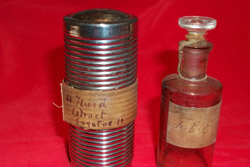
Fluid Extract Ergot
|
Pregnancy
Votive Medal
Circa 19th Century
A
silver
plaque depicting
a pregnant belly. It was used as an offering to St. Gerard
Majella,
after the woman's prayers about her pregnancy have been
fulfilled.
19th Century, Sicily. (11 x 9.5 cm.) |
|
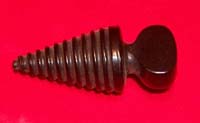
|
Maunder's
Mouth Wedge
Circa 1860's
Ebony mouth gag. 6 cm
length, 3 cm widest
diameter. |
|
1280
Council of Cologne
A woman's mouth was to be kept
open with a mouth
wedge in order for her child in her womb to breath air while it was
being
removed by operation. |
Chinese
Medical Doll
Circa. 19th Century
Tradition and extreme modesty
prohibit Chinese
doctors from examining female patients. This solid ivory figurine
serves as a devise used by women to indicate to the doctor the part of
the body in which ailment was present. Physicians carry it with them to
the bedside, or at times the patient brings it with her ( Ming Period
1368-1644).
The nude lady is ornately carved, 14 cm in length, 4 cm wide, on a
mahogany
stand. |
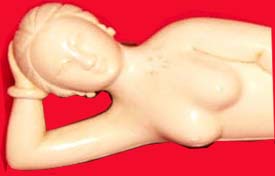
|
|
Birthing
Postures
There
were various
birth
postures practiced throught the centuries. Childbirth during the
medieval times took place on a stool or in the lap of another woman.
Others have it kneeling or squatting. In Taunton England, standing up
was the choice. Mauriceau of France made a daring innovation when
he started to deliver his patients in bed.
|
|
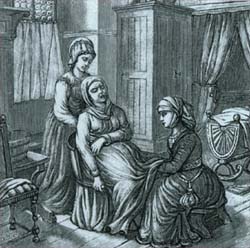
|
Birthing
Postures
Childbirth during the medieval
times took place
on a stool or in the lap of another woman.
|
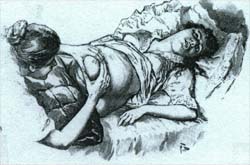
|
Birthing
Bed
Mauriceau of France on the 17th
Century made a
daring innovation when he started to deliver his patients in bed! |
Wet
Nurse
If mothers could not breastfeed
their newborn themselves, the well to do hires a wet nurse.
Mothers who cannot afford to employ a wet nurse would ask a close kin
to do the task. Midwives or the physicians often times were asked
to select a breast to do the job adequately.
|
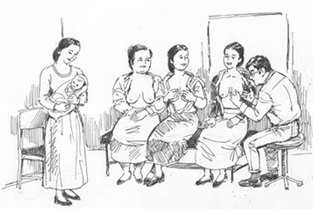
|
Amputation
Cased Set
C 1895 - 1900
Small leather cased amputation kit
by Otto Helmond,
Pitt. Pa. All metal handle on the amputation saw denoting post
1880
sterilization concerns.
During the Civil War 1861-
1865, medicine barely
rosed up from its medieval period. Amputation was the only
reasoned treatment for gun shot wound, severe laceration, severly
infected limb, or fracture . Amputation accounted for 75 % of all
the surgeries done during the civil war. Records showed more or
less
30, 000 amputations were performed on the Union side with
more
than 25 % mortality. Few doctors knew how to administer ether or
chloroform although available and the principle of antisepsis was
unknown. Surgery was performed with bare unwashed hands in the
open
fields. The surgeons used the same amputation kits, rubbing
them between cases with a piece of dirty rags.
|
Boxed Pessaries with
inserter.
Circa. Early 1900's
|
Y shaped
pessary made of gold
|
Mushroom shaped Pessary
|
|
IUD's Sold
as Pessaries
Medical instruments from the
end of the 19th
century through early 1900's, include descriptions of "pessaries" that
resemble modern IUD (Intrauterine device). The existence of
Comstock
laws that prohibit the use of the mails for contraceptive devices may
have
been the reason for the false advertisement.
Anthony Comstock was an anti-sin
crusader
whose activities resulted in the passage of the 1873 federal postal law
prohibiting the propagation of birth control information and
contraceptive
devices through the U.S. mail. He labeled contraceptive
methods
as "lewd, lascivious, and obscene," that he burned tons and tons
of
contraceptive materials. In 1930, a U.S. federal court
declared
the Comstock law unconstitutional.
|
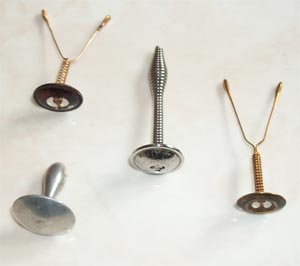 |
The
Forerunner of Modern Day IUDs
Intrauterine
Wishbones &
Stem Plugs
It
was illegal to sell or
promote any form
of contaceptives during early 1900s. These birth control devices
were sold and advertised as pessaries. They were place in
the cervix with the stem inside the uterine cavity. These
pessaries were the
forerunners
of the modern day IUDs.
|
 |
Clinical
Thermometer
Circa 1860
Clinical thermometer
was introduced in the mid 19th Century. This underarm bent
thermometer
is clumsy, heavy, and inaccurate. Its scale etched on an ivory
could
read only if in place. If removed before recording, the mercury
column
drops in the process. It was superior to the hand on the
forehead
method . The thermometer is 17.5 x 5 cm.
Glass and ivory in brown leather case.
|
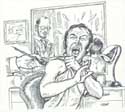
|

|
Baunscheidt's
Lebenswecker
Circa 1880
Lebenswecker, a
German word for life awakener. A counter irritant
device.
The sharp needles in the tip of the instrument were dipped in a mixture
of menthol, camphor, turpentine, and vegetable oil. The head of
the
device was placed on the area of ailment. The toggle was drawn
back
to cock the spring then released driving the needles into the patient's
skin (ouch!), and presumably curing numerous illnesses. Seemed to
work, most patient never came back for a second treatment! The
hollow
ebony tube contained a handle with coiled spring attached.
Measures
27 x 3 cm.
|
|
Warning!
Warning!
Warning! Warning! Warning!
Medications mentioned on this web
are intended
for historical information only. Do not attempt to take or apply
any of the medicine to yourself or to others. It will cause
irreparable
damage to your health and to others. |
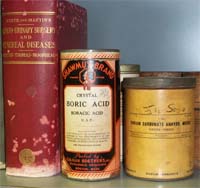 |
Treatment
For Venereal Disease
Pre-Penicillin Era
Treatment for female
Gonorrhea: Cleanse vagina, cervix and urethra with saturated
solution
of boric acid. Dry with pledget cotton, held by a uterine
forceps.
Soak pledget in a 1% aqueous Methylene blue solution and apply it
up to the cervical canal, vagina, and urethral opening. Treat 2x
weekly.
|
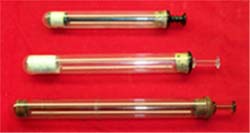
|
Glass Vaginal
Syringes
Circa
1890s
Syringes for injecting
medicine to the vagina.
Varying lengths: 14, 20, 22 cm.
|
|
French
Secret for Venereal
Prophylactic
Boric acid powder,
Burnt alum powder,
Quinine hydrochloride.
Dissolve 1 dram in
pint warm water, wash and inject into vagina immediately after sexual
intercourse.
|
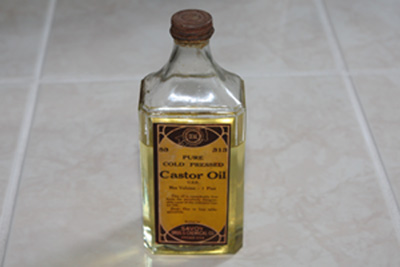
|
Induction
of Labor
Castor
oil was commonly used medication to prime labor. Two table spoons
of castor oil was given followed by ten grains of quinine. This regimen
was repeated if labor does not start in one hour. An enema was
also given in conjuction with the above mediccations if labor does not
ensue. See other uses of enema below. (Warning: Do not attempt to use the
above medications. It will do irreparable damage to you and your
unborn child.)
|
|
Pubiotomy
A
surgical procedure
to divide the pubic bone to accomplish delivery of the fetus on
difficult
labor. It was first performed by J.R. Sigault in 1777. (Sometimes
called the Sigaultian Operation). Reintroduced by Morisani
of Naples in 1866, in France by Spinelli in 1891. Introduced in
America
in 1892. |
|
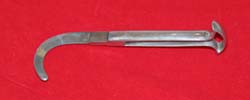
|
Symphysiotomy
Knife
Circa Early 1900
|
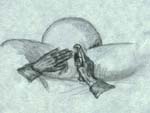
|
Symphysiotomy
Operation
Too firm
a union of the pubic bone was mistakenly regarded as a cause of
difficult
labor. The surgical separation of the pubic bone called
symphysiotomy
was in fashion one time and in competition with Cesarean section in the
mid 1800 through early 1900. Although the United States abandoned
the procedure because of the mutilation it did to the mother, European
and South American accoucheurs continued to perform these horrible
operation
up to the mid 20th Century.
Art work by
Aimee Gapultos
|
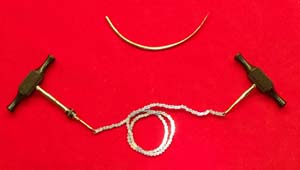 |
Chain
Saw
c 1890s
The
string saw developed
by Leonardo Gigli (1863-1908) for dividing the pubic bone. It was
believed that cutting the segment of the pelvis made it moveable, and
yield
to the pressure of the uterus to accomplish delivery of the
child.
The operation is also called Hebotomy or Hebosteotomy.
Ebony
handles, 6cm.
The length of the chain saw and handles measure 45 cm. Comes with
a large curved unplated steel symphysiotomy needle, 9cm |
Ecraseur
(Uterine Guillotine)
Circa 1865
An
awesome unplated
steel instrument used to amputate the cervix to eradicate cancer of the
cervix, or to treat uterine prolapse. It has a chain loop
mechanism
that is tightened by turning the handle clockwise until the cervix is
crushed.
This technique was introduced by Gustav Simon in 1850.
Hysterectomy
was out of the question because it was fatal. (L 36 cm) |
Ecraseur
Circa 1870
The cervical stump in abdominal
hysterectomy was
amputated by a chain ecraseur in the late 19th Century. The chain
was placed around the cervix and was tightened so as to strangulate and
lacerate the cervix, thus lessening the chance of hemorrhage. (L
31 cm) |
Wire
Ecraseur
Late 19th Century
The wire ecraseur
was
passed
around the base
of uterine polyp or tumor. The handle was turned to tighten the
noose
until the tumor came off. (L 15 cm) |
Facts
About Hysterectomy
Levi Lane, in 1878 performed the
first hysterectomy
vaginally. Palmer Dudley found no cases of vaginal
hysterectomy
before 1878 |
LAVH (Laparoscopic Assisted Vaginal
Hysterectomy)
Concept in
1810?
Maxentius Gutberlet introduced the
new technique
of cutting the uterine attachments by abdominal approach and then
resorting
to removal of the uterus from the vagina as early as 1810.
Ref: James Ricci, M.D.
The Dev of Gyn Surg
and Instr. pg 387
Norman Publishing, 1990 |
Facts
About Episiotomy
Fielding Ould (1710-1789) in 1742,
he first suggest
episiotomy to avoid perineal injury.
Paul Dubois (1795-1871) introduced
mediolateral
episiotomy. |
Carl
Braun Ritter von
Fernwald (1822-1891)
gave the name episiotomy.
Ref: James Ricci, M.D.
Norman Publishing, 1990 |
Metrotome
Circa 1860
Cervical stenosis,
uterine malposition
like retroflexion were attributed to several women's complaints.
Among them were painful menstrual cramps, and infertility. It is
a scissor-like instrument for dividing the cervix (inset on
right).
The opening of the sharp edge was adjusted with a screw inside the
handle.
James Young Simpson introduced the metrodome in 1860. |
Birthing
Scissors
Circa 19th Century
A brass stork cord scissors.
Beak surfaces
are flat and were used to compress the fetal cord until it could be
tied
off with string and cut. Note the image of an infant on the
stork's
belly. Midwives in mid 1700 often debated about how long a fetal
cord should be cut. They believe to cut the cords longer on the
male
so "they would be well provided for the encounter of Venus!" On
the other hand, the cords were cut shorter on the female because "they
would be modest and their privities narrower to make them more
acceptable
to their sexual partner!" (9 x 4.5 cm) |
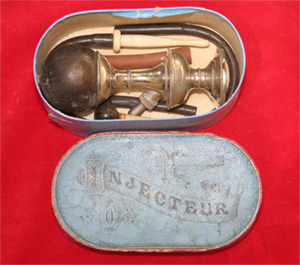
|
Enema
During the rule of King
Louis XIV,
aristocrat women resorted to enemas as often as 4 times a day to
improve their complexion and retain thier youthful appearance. Cloyster of opium were given
to relax an irritable colon .
|
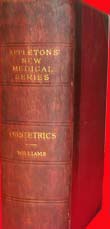
|
J.
Whitridge William's Obstetrics
1903
First Edition
First Printing
The gold standard textbook in
Obstetrics in
the world. On its 21st edition 2001.
The
classic texbook used by
medical students
and practioners alike for 100 years. On Chapter XV, Conduct of Labor,
it
states:
"The physician should
direct
the nurse
not to send for him if the labor commences at night, between 11 P.M.
and
7 A.M., unless it seems necessary that he should see the patient at
once.
On the other hand, when the pains begin between 7 A.M. and 11 P.M., the
physician should be notified immediately, so that he may make his plans
accordingly." Hmmm, the good old days huh!!
John Whitridge Williams
(1886-1931), a Professor
of Obstetrics in John Hopkins University and author of Americas's most
popular obstetric text, first published in 1903.
|
|
|
See Anesthesia and Bloodletting in
Obstetrics on next pageAnesthesia
|
Return
to Top

All statements in
this web page
regarding date, age, and origin are statements of opinion. All
photos
and materials on this web page are protected by copyright laws.
Please
obtain direct permission from to
use any and all materials on this site, including photographs and
drawings. to
use any and all materials on this site, including photographs and
drawings.
|


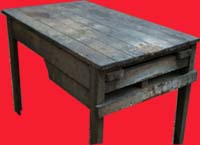
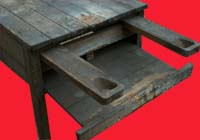
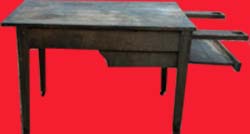
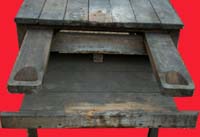

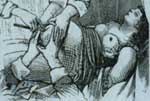

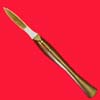







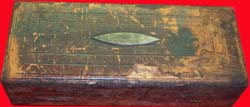
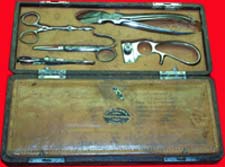
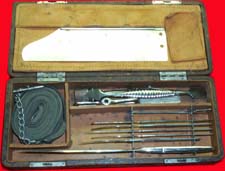
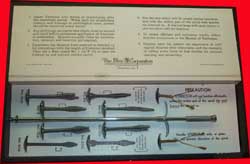













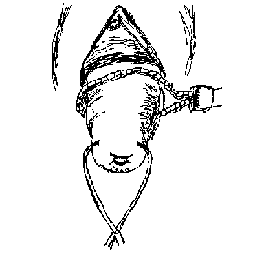

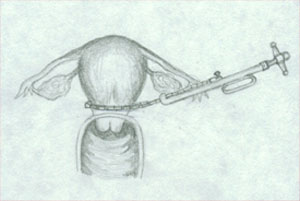

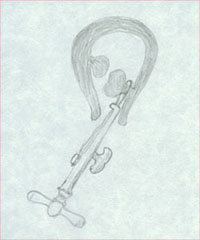


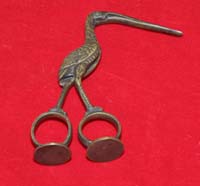
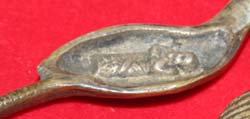



 to
use any and all materials on this site, including photographs and
drawings.
to
use any and all materials on this site, including photographs and
drawings.




